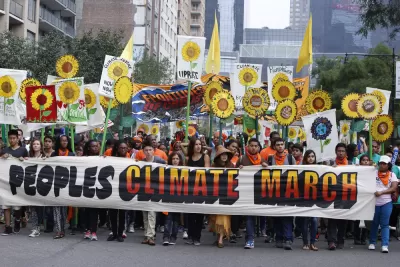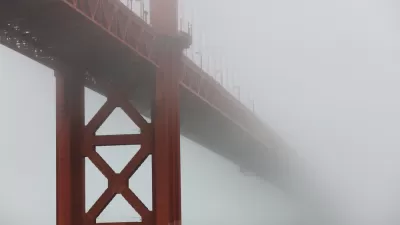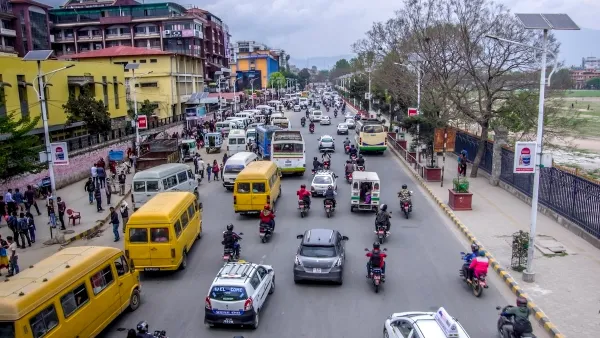The research is clear: For climate leadership, look no further than young people, people of color, and young people of color.

Ahead of the November election, environmental scientist and advocate Ayana Elizabeth Johnson reviews the polling on climate change to identify key "environmental voters." The upshot? Millennials and people of color—and millennials of color—could save the planet.
While concern for environmental issues falls decidedly along party lines, the "core constituency" for climate action is the same even within and across parties. Millennials are "twice as likely as older voters to care deeply about the environment," she writes, with 67 percent believing climate change should be a "top priority" for the federal government. Millennials are also "the generation most supportive of expanding wind farms, least supportive of expanding fossil fuel extraction, and most concerned about the lack of protection of animals, habitats, water quality, and parks."
Environmental protection also tends to be a higher priority for Latino, Black, and Asian voters than for whites:
"When it comes to climate change, the polling data is striking: 70 percent of Latinos and 56 percent of blacks believe the earth is getting warmer because of human activity, compared to 44 percent of whites. Additionally, 54 percent of people of color think addressing global warming should be a top priority for the government, compared to 22 percent of whites — a gap that has widened by 10 percent over the last decade as fewer whites consider it a priority."
Climate policy is increasingly on the radar of American voters overall, Johnson writes, but understanding this breakdown highlights an opportunity for advocates to turn out a new bloc of environmental voters.
FULL STORY: Young voters and voters of color are key to climate policy

Planetizen Federal Action Tracker
A weekly monitor of how Trump’s orders and actions are impacting planners and planning in America.

San Francisco's School District Spent $105M To Build Affordable Housing for Teachers — And That's Just the Beginning
SFUSD joins a growing list of school districts using their land holdings to address housing affordability challenges faced by their own employees.

The Tiny, Adorable $7,000 Car Turning Japan Onto EVs
The single seat Mibot charges from a regular plug as quickly as an iPad, and is about half the price of an average EV.

Seattle's Plan for Adopting Driverless Cars
Equity, safety, accessibility and affordability are front of mind as the city prepares for robotaxis and other autonomous vehicles.

As Trump Phases Out FEMA, Is It Time to Flee the Floodplains?
With less federal funding available for disaster relief efforts, the need to relocate at-risk communities is more urgent than ever.

With Protected Lanes, 460% More People Commute by Bike
For those needing more ammo, more data proving what we already knew is here.
Urban Design for Planners 1: Software Tools
This six-course series explores essential urban design concepts using open source software and equips planners with the tools they need to participate fully in the urban design process.
Planning for Universal Design
Learn the tools for implementing Universal Design in planning regulations.
Smith Gee Studio
City of Charlotte
City of Camden Redevelopment Agency
City of Astoria
Transportation Research & Education Center (TREC) at Portland State University
US High Speed Rail Association
City of Camden Redevelopment Agency
Municipality of Princeton (NJ)





























